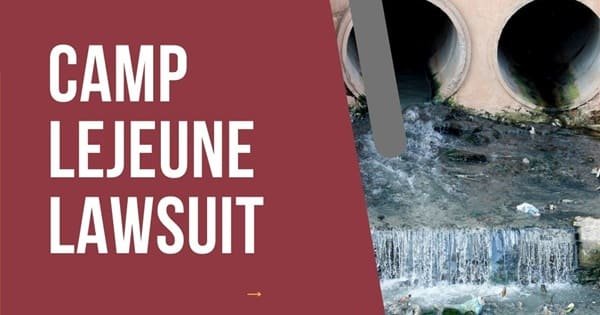Camp Lejeune has always been a major Marine Corps base in North Carolina that started its journey in 1942. However, the period from the 1950s through to the 1980s was characterized with severe contamination of the water supply at the base. And? Well, that was super serious actually, like the chemicals used in the industrial processes such as cleaning metal, and dry-cleaning, found their way into the drinking water, and it was not a small quantity.
Consequently, over a million people were living or working at Camp Lejeune all those years and still using the polluted water without any indication. The extent of contamination was revealed through tests by the 1980s. A year later, the government declared Camp Lejeune an EPA “Superfund” site, an agency’s list that ranks the most dangerous locations in the United States. So, no wonder why we are still talking about the Camp Lejeune Lawsuit Update thing. Let’s see what became of this case.

Legislative and Legal Background
The victims couldn’t sue easily because a state law in North Carolina prohibited lawsuits if a considerable amount of time had already passed, even if the affected people were not aware that they were ill. That law made it impossible for thousands to get their rights.
Congress enacted the Janey Ensminger Act in 2012. The act made provision for medical care, but no monetary compensation. Families continued to have a hard time.
The Camp Lejeune Justice Act (CLJA) was signed into law in 2022. It allowed lawsuits to be filed by the victims, but they had to send a claim to the Department of the Navy first and wait six months for the reply. If a denial or no reply, then they could become a lawsuit in federal court.
The tally of the claims is enormous. Around the middle of 2025, the Navy was reported to have gotten almost 410,000 claims, while over 3,300 suits had been filed in the federal court already.
The illnesses mentioned in the cases are cancers, birth defects, Parkinson’s disease, and death by negligence. Yup! All that! The entirety of the lawsuits has been adjudicated in the federal court for the Eastern District of North Carolina.
Key Phases and Developments (2023 to 2025)
Slowly but surely, the lawsuit is going forward. Twenty-five “bellwether” or test cases were chosen by the court involving a range of diseases such as bladder cancer, kidney cancer, Parkinson’s disease, leukemia, and non-Hodgkin’s lymphoma. The first of these trials is expected to occur in the end of 2025 and continue through 2026.
In July 2025, a significant court ruling gave the go-ahead for victims to use previous scientific studies as evidence, which was a substantial win.
Negotiations for a settlement are at present being held. The court appointed two Settlement Masters to come up with a plan by the end of 2025. They are mailing forms to the victims to approximate the possible settlement amounts.
Settlement Amounts and Projections
It has been allocated by the Congress a total of 22 billion dollars for settlements and court awards. Nevertheless, the large number of claims will make the amounts paid differ widely.
Moreover, there is the Elective Option (EO) program to achieve quicker settlements on specific claims, but the pace of work has been very slow. It is estimated that only around 52,000 claims are eligible for this expedited process.
If a person develops a serious illness as cancer or Parkinson’s, the payment may be between $1 million and $1.5 million; however, most of the offers have been lower. Besides that, there are also some diseases that may result in a small payment, which is sometimes between $150,000 and $300,000.

Our dedicated team gathers information from all the reliable sources to make the law accessible and understandable for everyone. We provide the latest legal news stories from across the country, delivered straight to you.
